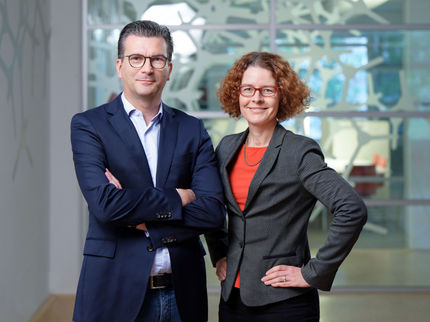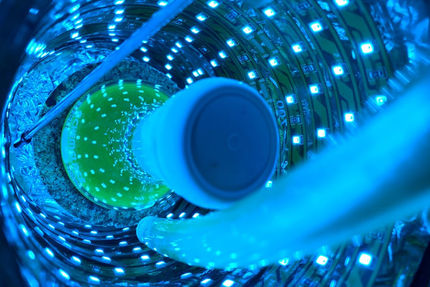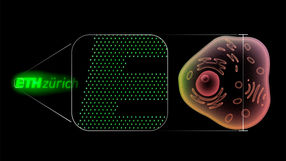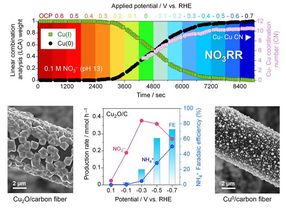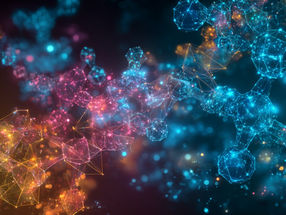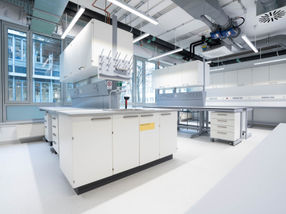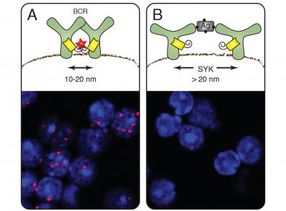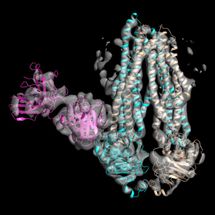Ping-pong with photons: light as a tool for a new and, above all, sustainable chemistry
Advertisement
In terms of progress in knowledge, photocatalysis is currently at the forefront of chemistry. In this field, Dr. Jola Pospech and her team at the Leibniz Institute for catalysis in Rostock are developing new approaches for classic reaction pathways. One example is the hydrofunctionalization of valuable products such as bioactive amines, which occur naturally in neurotransmitters and are important for drug research. In her lectures, Dr. Pospech uses concise images to explain photocatalysis to first-year students.
Photocatalysis requires light, and Dr. Jola Pospech's research group often uses mass-produced disco lights as a light source in the laboratory: black light. The curious name refers to LEDs in the ultraviolet range, UV-A light, which is just barely visible and is just as popular in dentistry as it is in disco clubs.
"In our case, this light has the right wavelength to trigger chemical reactions," explains Dr. Jola Pospech. "We point the LED panel at the reaction vessel, where the photons hit the outer electron pairs of the substances involved, in our case the catalyst, and it enters what is known as an excited state." This means that it is now able to release or accept an electron and thus activate chemical starting materials. Ultimately, new chemical compounds are formed when the substances involved exchange or share electrons.
Photoredox catalysis
Let's take two basic reactions in chemistry: oxidation and reduction. For oxidation, the catalyst donates an electron and takes it back at the end of the cycle. Conversely, for reduction, it accepts an electron and releases it again at the end. "You can imagine the whole thing like a game of ping-pong," says Dr. Pospech and explains it using photoredox catalysis, which combines both reactions.
Jola Pospech: "Imagine you are holding two balls in your trouser pocket. When there is an energy boost caused by the photon, one ball, i.e. an electron, moves to the next higher level." Jola Pospech's hand moves with the imaginary ball from her pocket over her head. "The pocket now has access and space for new players. This is how chemical reactions get going. Once the starting materials have been converted, the ball can be released from the hand and the cycle starts all over again." The imaginary ball ends up in the pocket again.
Example: Hydrofunctionalization
For centuries, chemistry worked as follows: Chemists heated their reaction vessels to activate the substances inside. "With light, I can overcome the activation barrier much faster and with much greater amounts of energy," says Jola Pospech. Thanks to modern LED technology, the wavelength of the light source can be precisely matched to the absorption spectrum of the catalyst.
As an example, the chemist cites hydrofunctionalization, a popular reaction pathway that is very "atom-efficient": the substances involved are converted down to the last atom, without any by-products. This results in valuable products such as bioactive amines, which occur naturally in neutransmitters and are important for the development of active ingredients.
Until now, many of these reactions have been carried out using catalysts made from scarce and expensive metals, with many intermediate steps, co-catalysts and so-called sacrificial reagents. Jola Pospech: "They only serve to donate an additional electron so that another electron can change partners at the appropriate point in an energetically favorable way."
Organic catalysts as an alternative
As an alternative, her research group developed organic photoredox catalysts based on nitrogen, hydrogen, oxygen and carbon. "The compounds we use are cheap to produce, can be activated precisely and quickly using black light and are mechanistically multifunctional." This makes co-catalysts and sacrificial reagents obsolete.
The Rostock chemists are currently in the process of giving this catalyst a selective function by incorporating amino acids. This should help to produce right- and left-handed molecules in a light-driven manner. For this, the catalyst needs a "spatial sense", so to speak, stereo information. According to Jola Pospech's idea, amino acids could convey such stereo information because they have defined three-dimensional structures.
According to Dr. Pospech, people in the field are definitely motivated to use such findings from basic research for industrial purposes. At least in the long term. "Every major chemical company now has research departments for photocatalysis and electrochemistry." LIKAT has its finger on the pulse, so to speak.
Note: This article has been translated using a computer system without human intervention. LUMITOS offers these automatic translations to present a wider range of current news. Since this article has been translated with automatic translation, it is possible that it contains errors in vocabulary, syntax or grammar. The original article in German can be found here.




